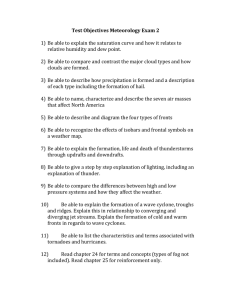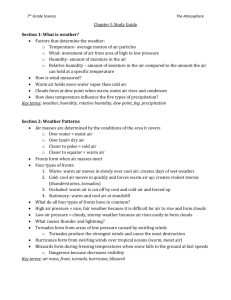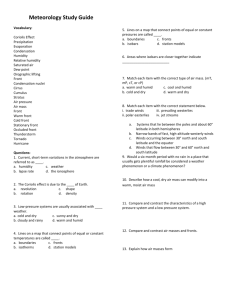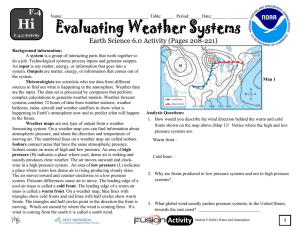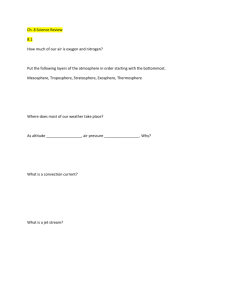Weather Patterns Lab: Isotherms, Isobars, Air Masses
advertisement
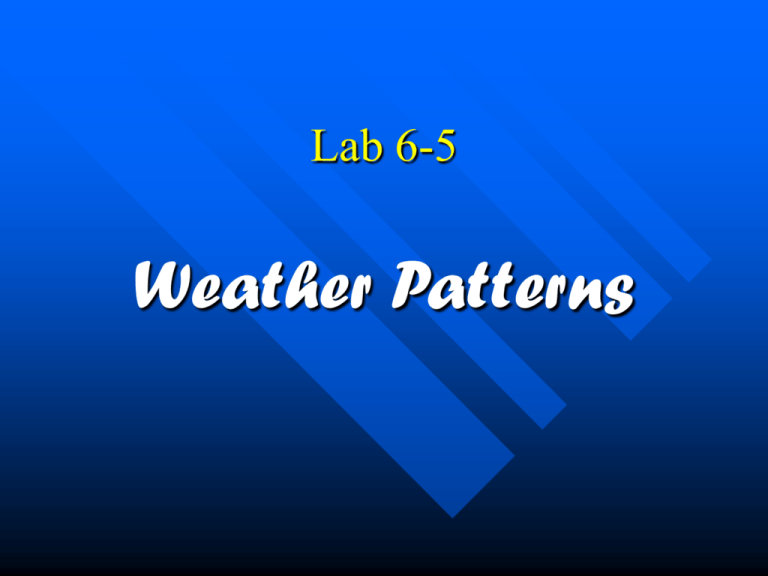
Lab 6-5 Weather Patterns Map A: Isotherms Connect points of equal value Use an interval of 10°F Stop your lines when they go off the coast. If more dots are needed, add some… Map B: Isobars Write the following in an empty space on the map: Millibars Station Model Code 1024.0 1020.0 1016.0 Fill in the code here 1012.0 1008.0 1004.0 1000.0 Map B: Isobars- Continued Draw isobars Use an interval of 4mb. Label the highest pressure with an Label the lowest pressure with an Map C: Wind Patterns Draw arrows… Map C: Wind Patterns Now Draw Large Arrows… Map D: Precipitation Patterns Draw a line encompassing the entire area where rain is falling. Lightly shade it in with pencil. Label the Air Masses. Handy Dandy Earth Science Reference Tables, pg 13 An Air Mass is a large region of air that has the same temperature and humidity. It gets its properties from hanging out in the same region for a while. For example: If the source region is the gulf of Mexico and the air comes to Long Island… It will feel warm and moist to us: maritime tropical (mT). If it comes from central Canada… It will feel cold and dry to us: continental polar (cP) What type of air mass? mP Cool & moist: mP Cool & Dry: mP cP cT Warm & Moist: mT mT mT Make the Synoptic Map Use Instruction #1 as a check list of things to put on the map. Add the fronts. Now that we know WHERE the fronts are, how do we know what KIND they are? If colder air is coming in, it is a cold front. If warmer air is coming in, it is a warm front. How to Find & Label Fronts

